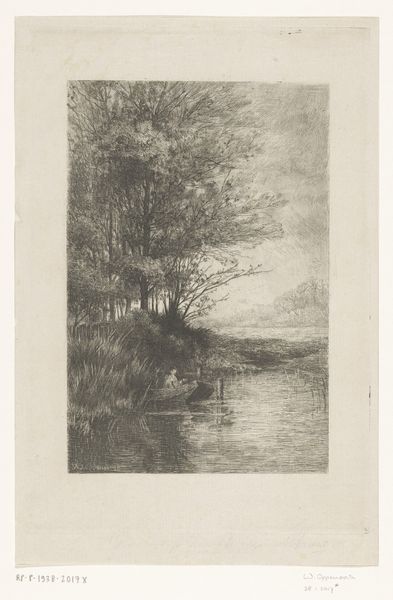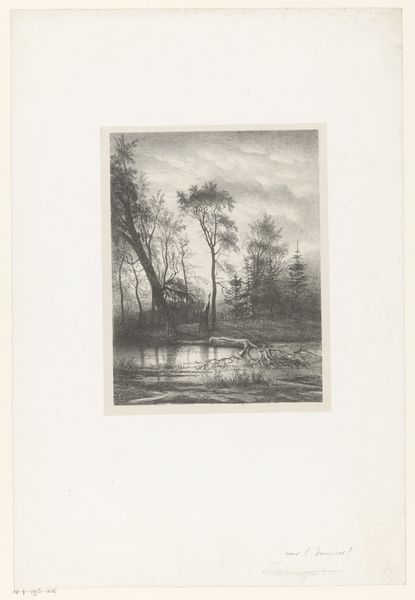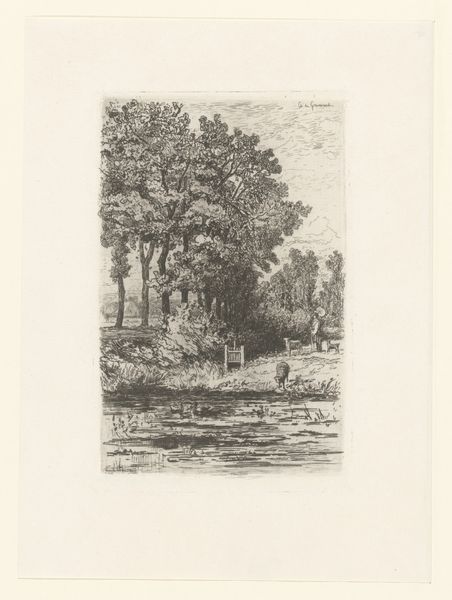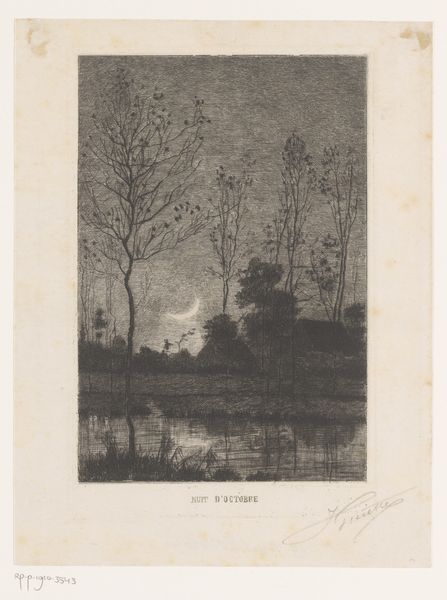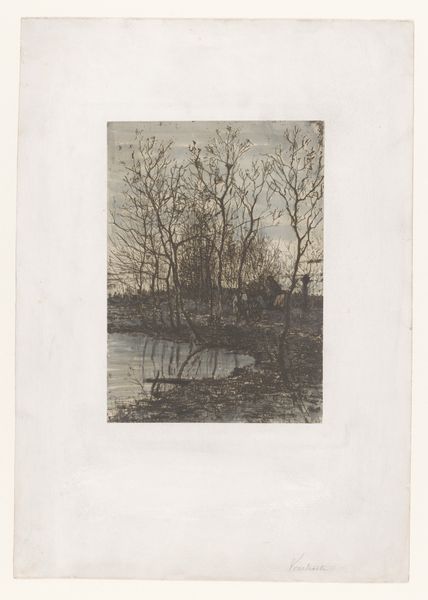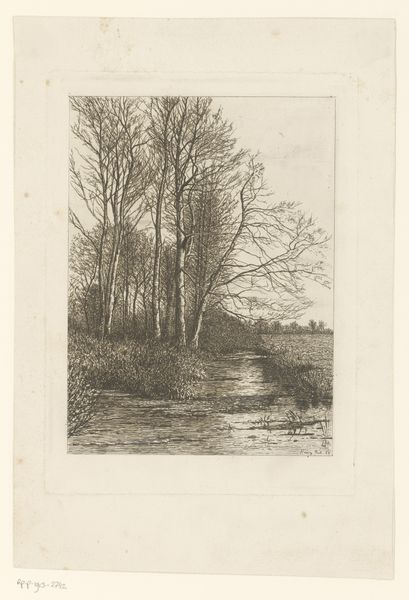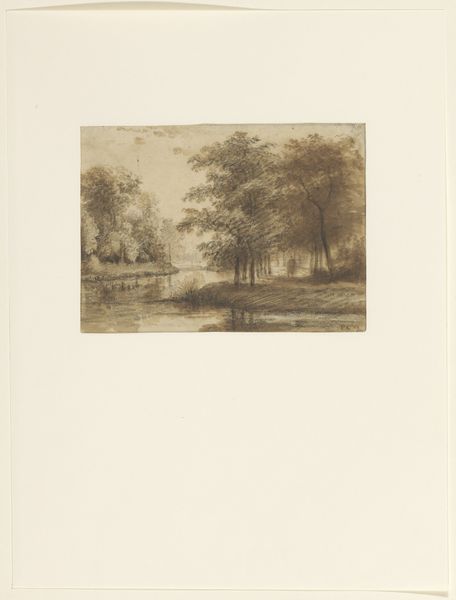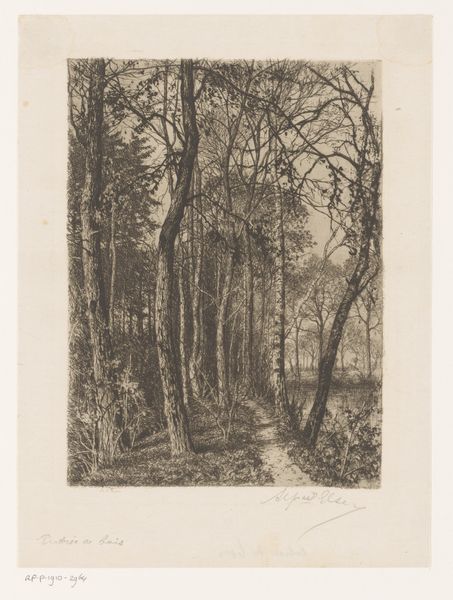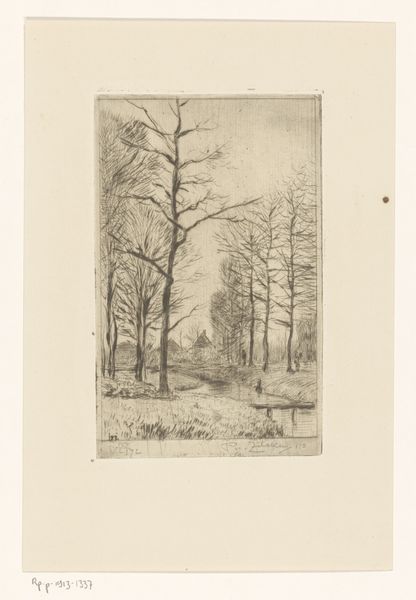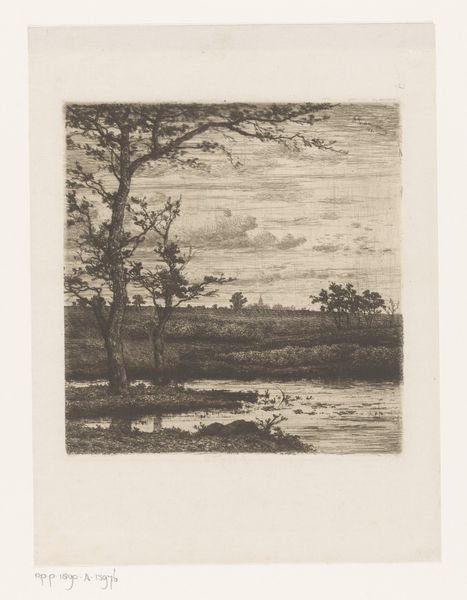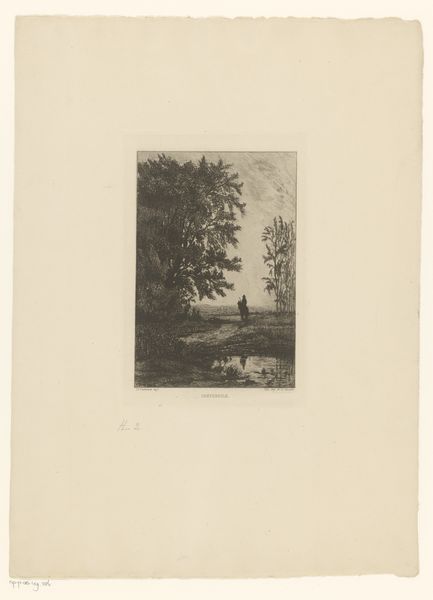
print, etching
# print
#
impressionism
#
etching
#
landscape
#
realism
Dimensions: height 280 mm, width 200 mm
Copyright: Rijks Museum: Open Domain
Curator: This etching is titled "Landschap met beek", or "Landscape with a Brook," crafted by Alfred Elsen in 1884. It's a splendid example of late 19th-century Dutch landscape art, housed here at the Rijksmuseum. Editor: It certainly captures a somber, almost desolate mood. The bare trees reaching into a clouded sky... there’s a stark beauty to it, a delicate dance of light and shadow. The texture also stands out to me - look at how the different areas of the landscape are constructed! Curator: Elsen expertly uses the etching technique to convey a nuanced interplay between realism and impressionism, typical of the era. One notes, for example, the precision in the depiction of the branches juxtaposed with the softer rendering of the sky. Editor: I agree; the composition is quite striking. It leads the eye along the brook, inviting contemplation on the natural world as it intersects with human presence. In that tiny figure on the left, could it be seen as commenting on the individual’s place within society and landscape at the end of the 19th century? Curator: Intriguing idea. It’s crucial to remember the art world in 1884. Impressionism was challenging established academic norms. An etching like this allowed for wider distribution, bringing the aesthetic values of a new vision to a broader audience and more economically than paintings at the time. Editor: I am particularly interested in the water's reflection. It almost seems to offer a double image, a commentary on truth and perception. And perhaps the reflections act as a symbol of the unconscious mind during the shift of ideologies in the 19th century, mirroring our own search for meaning? Curator: A deeply astute point. That delicate mirroring creates layers of meaning. The brook acts as both a compositional element and a profound symbol. Its intimate scale feels inherently Dutch. Editor: Studying the material quality itself of this landscape brings a feeling of solitude. I notice also in the way the bare branches act as connecting lines; the composition reveals the underlying structure, the architecture of the natural world. Curator: Precisely. The work stands as a testament to the power of quiet observation. Elsen offers not merely a scene but an invitation for us to look carefully and ponder our place within nature’s grand design. Editor: It is interesting how analyzing this seemingly quiet piece lets you see both the simplicity of nature while also engaging in meaningful philosophical considerations.
Comments
No comments
Be the first to comment and join the conversation on the ultimate creative platform.

